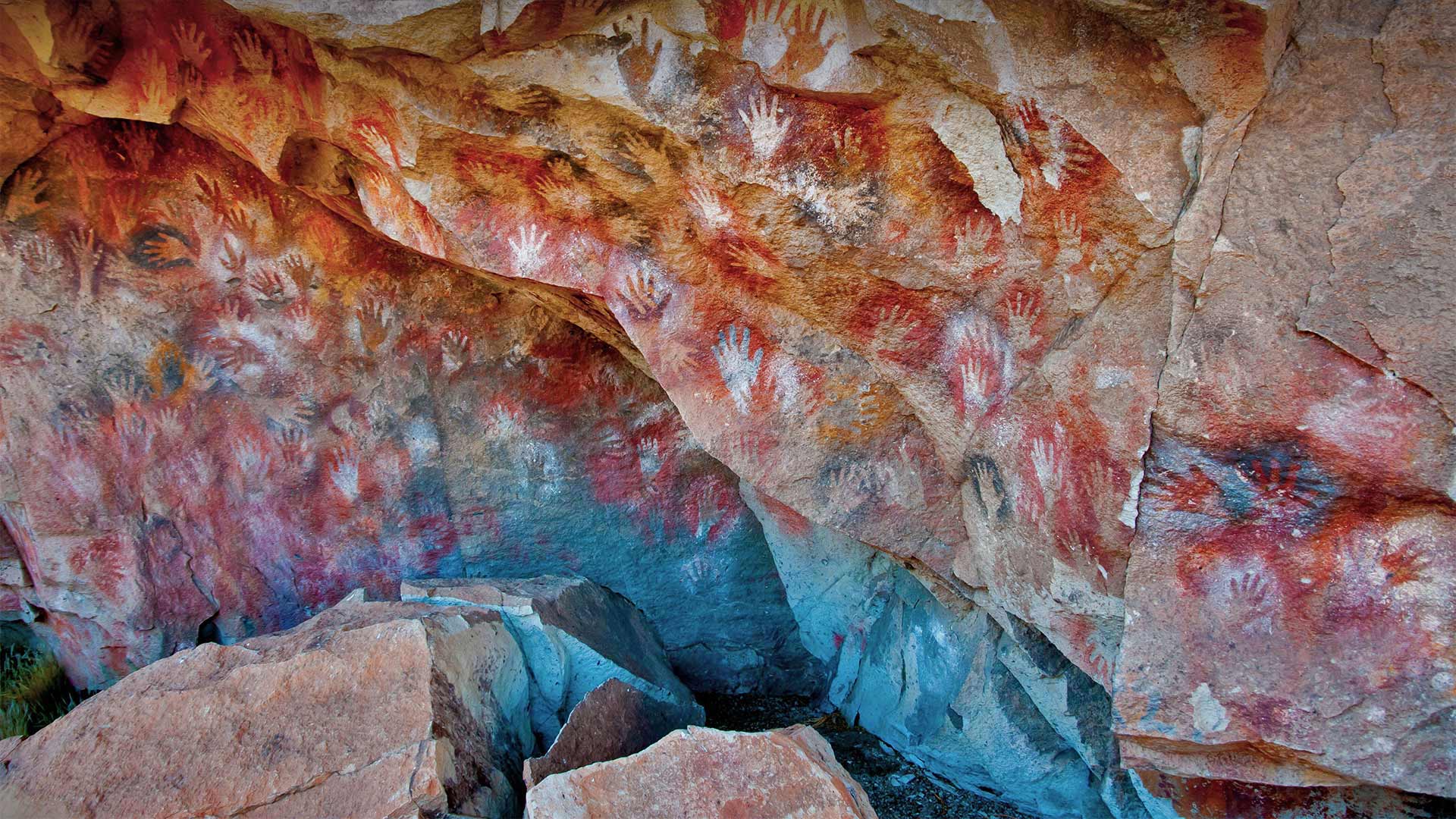标签 涂鸦 下的文章
阿根廷圣克鲁斯的洛斯马诺斯洞穴 Cueva de las Manos (Cave of the Hands) in Santa Cruz, Argentina (© Adwo/Alamy)

阿根廷圣克鲁斯的洛斯马诺斯洞穴 Cueva de las Manos (Cave of the Hands) in Santa Cruz, Argentina (© Adwo/Alamy)
9000年前的手印 9,000-year-old handprints
International Day of the World's Indigenous Peoples
What at first glance appears to be graffiti tagged on a rock wall is, in fact, artwork created by the first human settlers of this remote region deep in Argentine Patagonia. It's thought that the cave paintings were made between 13,000 and 9,500 years ago. The archaeological site is known in Spanish as the Cueva de las Manos (Cave of the Hands). It's the largest display of prehistoric handprints in the world, made all those years ago by people holding a hand against the rock wall and blowing pigments through tubes made of bone. Of the 829 black, white, red, and ochre prints, most are of young male hands. One print has six fingers, and only 31 are of right hands.
The cave paintings were created in at least three waves over thousands of years by ancestors of the Tehuelche people. Archaeologists have hypothesized that the artists were hunter-gatherers. This theory is supported by the fact that even older than the handprints are depictions of guanacos (a relative of the llama, and the main source of food at the time); rheas (large flightless birds); and hunting scenes.
Today, more than 370 million Indigenous people live in various regions of the world, like the Teheulche, who continue to live in Patagonia near the southern border between Argentina and Chile. To honor and protect the rights of the world's current Indigenous populations, the UN marks each August 7 as International Day of the World's Indigenous Peoples. We'll raise our hands in support of that.
世界土著人民国际日
乍一看,岩壁上的涂鸦标记实际上是阿根廷巴塔哥尼亚这个偏远地区的第一批人类定居者创作的艺术品。据认为,这些洞穴壁画是在13000年至9500年前绘制的。该考古遗址在西班牙语中被称为Cueva de las Manos(手洞)。这是世界上最大规模的史前手印展示会,多年前,人们用手抵着岩壁,用骨头制成的管子吹颜料。在829张黑、白、红和赭色的照片中,大多数是年轻男性的手。一个指纹有六个手指,只有31个是右手的。
这些洞穴壁画是特韦尔奇人的祖先在数千年中至少三次创作的。考古学家假设这些艺术家是狩猎采集者。这一理论得到了以下事实的支持:比手印更古老的是美洲驼(美洲驼的亲戚,当时的主要食物来源)的描述;大型不会飞的鸟类;还有狩猎场面。
今天,有3.7亿多土著人生活在世界各地,如特霍尔切人,他们继续生活在阿根廷和智利南部边界附近的巴塔哥尼亚。为了尊重和保护当今世界土著居民的权利,联合国每年8月7日都将其定为世界土著人民国际日。我们将举手表示支持。